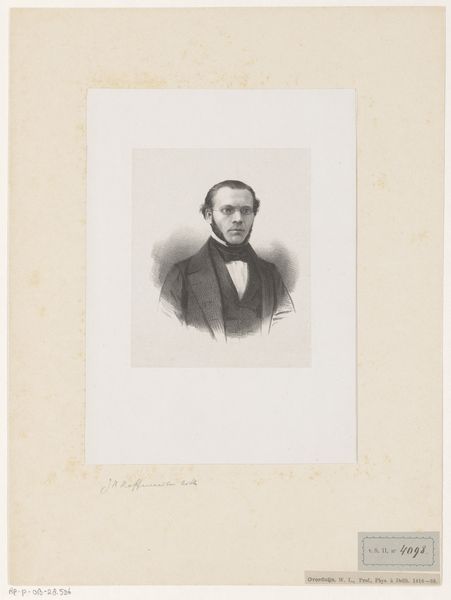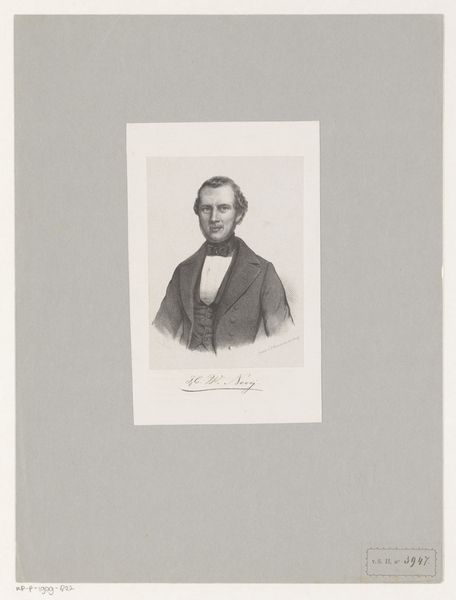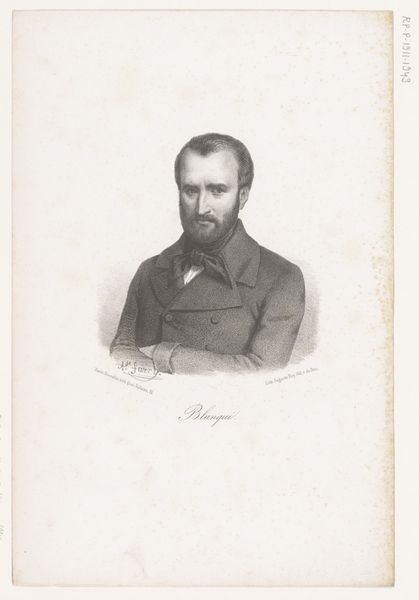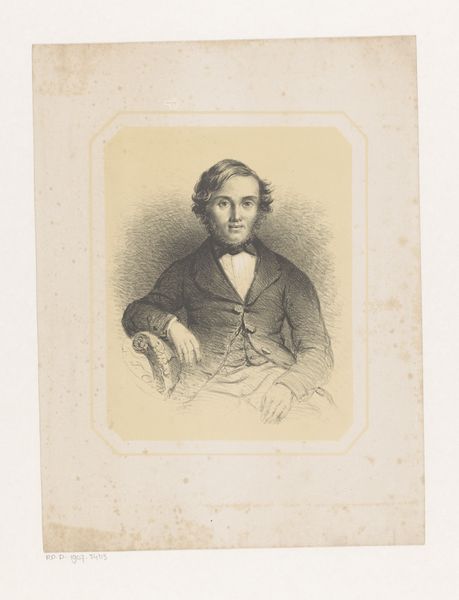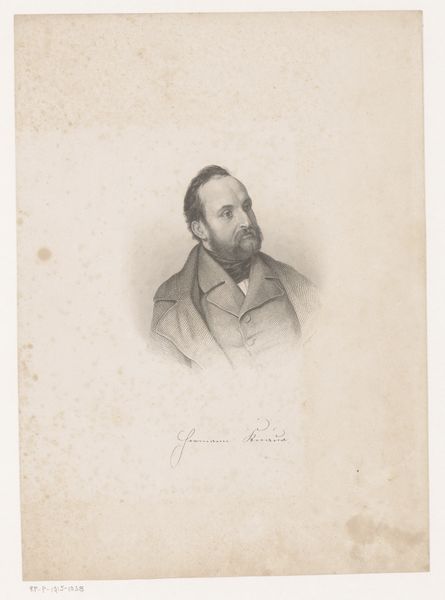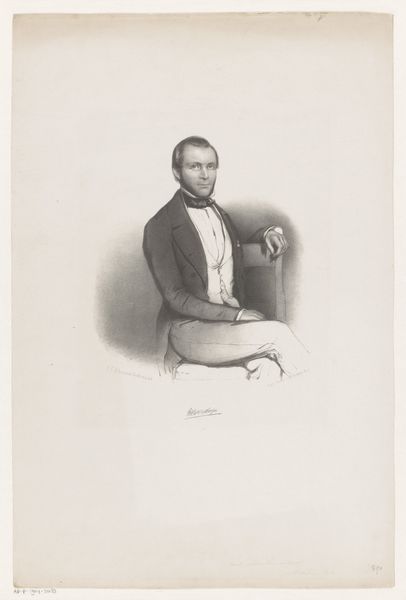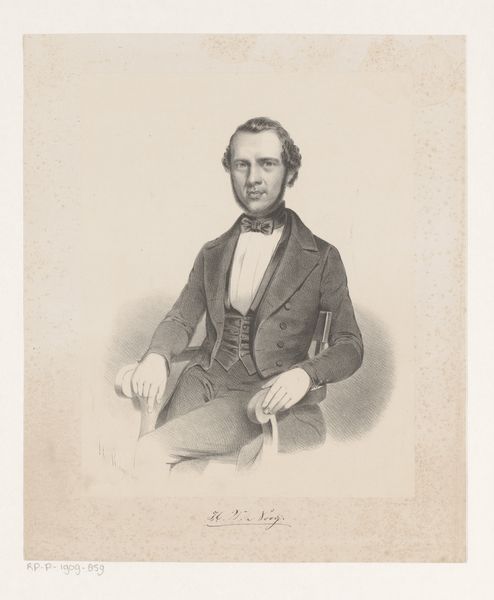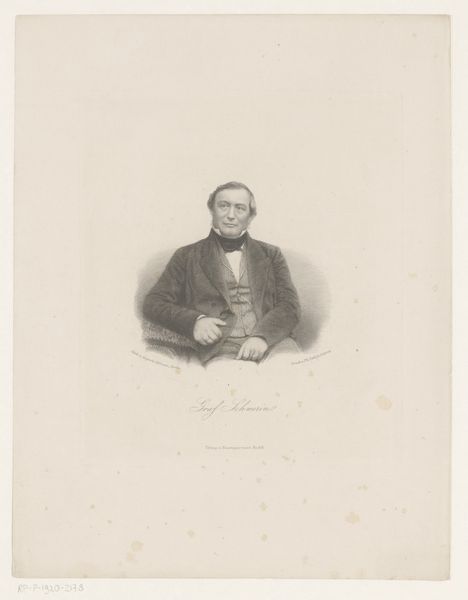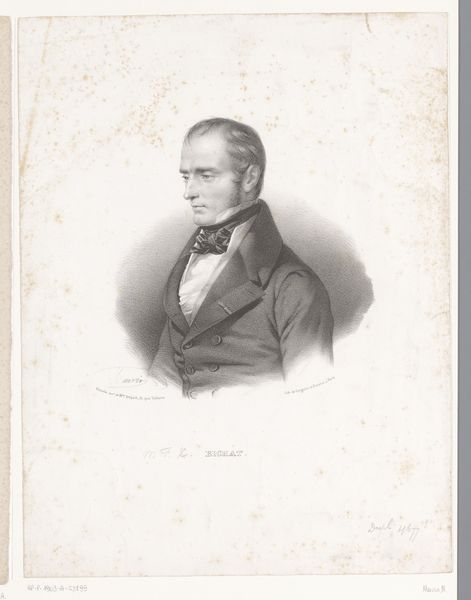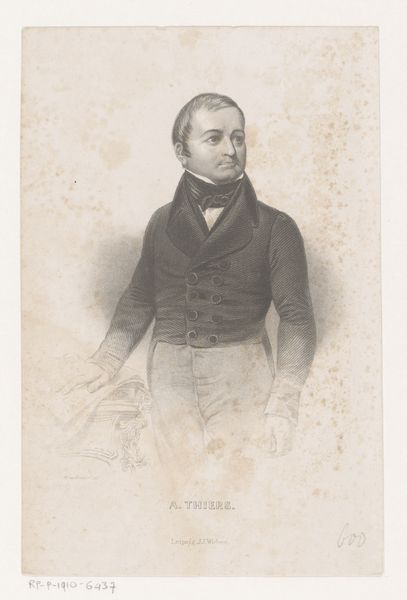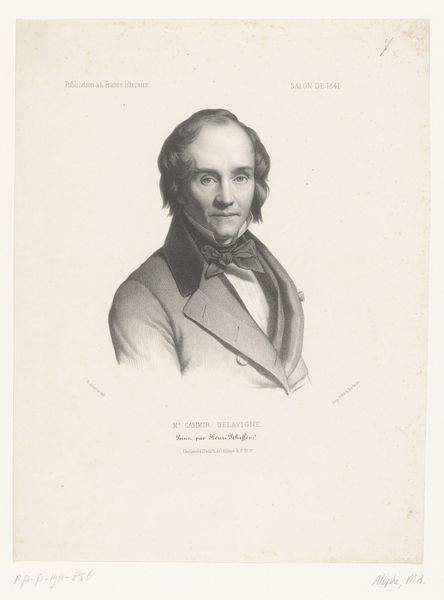
print, engraving
#
portrait
# print
#
old engraving style
#
academic-art
#
engraving
#
realism
Dimensions: height 275 mm, width 180 mm
Copyright: Rijks Museum: Open Domain
Curator: Ah, look at this print. It’s a portrait of Agricol Perdiguier, made sometime between 1832 and 1861. Léopold Massard created this engraving; it’s currently held in the Rijksmuseum. Editor: There's a melancholy to it. The sharp lines and subtle shading create this intensely focused and rather serious depiction, wouldn't you agree? He looks like a man with the weight of the world—or at least a really tough project—on his shoulders. Curator: Well, Perdiguier was no ordinary chap! He was a prominent carpenter, a Compagnon, and, importantly, an advocate for workers' rights during a time of intense social upheaval. The Realist style is interesting because of how his position and politics contrast the visual depiction: Massard gave him the appearance of nobility, as did many popular portraits. Editor: And that's precisely what jumps out. It's as if Massard wanted to portray Perdiguier as more than just a common craftsman, elevating him to a status of respectability and perhaps even...influence. Curator: Exactly. In the context of France, where class divisions were so rigid, portraying a worker with such dignity could be interpreted as a statement in itself. There's a sort of revolutionary quietness. Editor: A revolutionary quietness, I like that! He represents an entire class striving for recognition and power, reflected even in his neatly buttoned vest and well-tailored coat. Are we to take his pose at face value, or are we to consider how someone like Perdiguier uses and understands class codes and signals? Curator: That's the million-dollar question! Maybe it's both. Perhaps he’s adopting the visual language of the bourgeoisie to better communicate and negotiate with them. He still fought to retain workers’ culture as a leader in the Compagnonnage movement, an important social movement you can even read about today in French sociologist Pierre Bourdieu’s sociological scholarship! Editor: It's fascinating how a single portrait, a simple engraving on paper, can encapsulate so much social and political complexity. One could interpret so many messages about the relationship between class, appearance, and power here. Curator: It reminds us that art is never created in a vacuum. Even a seemingly straightforward portrait can be a site of negotiation. A silent yet potent articulation of identity, purpose, and vision during moments of intense change. Editor: So well said. That intersectionality speaks volumes. The details within this piece show the power inherent in challenging preconceived notions, one print at a time.
Comments
No comments
Be the first to comment and join the conversation on the ultimate creative platform.
